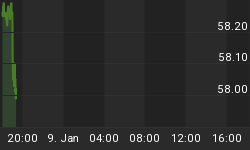When you look at the S&P 500's ETF (the SPY), you realize what a nice rally we have seen since the end of April of 2010. The SPY was up +4.49%.
However, when you look at the S&P 500's second largest sector, you realize what a horrible drop the Banking Index has had since May of 2010. The $BKX was down -20.18%.
How could that be? The S&P's largest sector is Info Tech which represents 17.64% of the S&P Index. The second largest sector are the Financials, and they represent 15.11% of the S&P. A 20% drop in a part that represents 15% of the whole, and yet the whole still goes up 4.49%?
The Banking Index isn't just any index either. It represents what it going on in banking stocks which is a reflection of what they do and how they are doing financially. One of the primary functions for banks is to provide loans to businesses and consumers. But, there is an on-going hesitation at banks, where they are resisting the granting of loans due to they fear of risk levels. This has frustrated Bernanke, and has been a thorn in his side.
Bottom line, we have a huge negative divergence between the S&P 500 and its second largest sector. Negative divergences are things that are "out of balance" with each other. Sooner or later, balance is always re-established.
Using an analogy, negative divergences are like rubber bands. The more you stretch them, the harder they will snap back when let go ... or when they break under the pressure. After being let go, a rubber band goes back to its "in balance" condition.
So that you can visually see the degree of imbalance occurring, see the weekly chart of the Banking Index versus the SPY that we posted below. Also notice how they were in balance during the 2004 to 2009 time period.
















